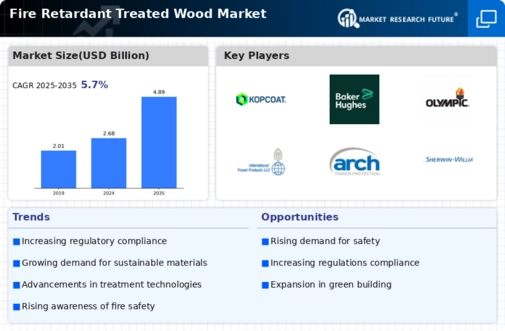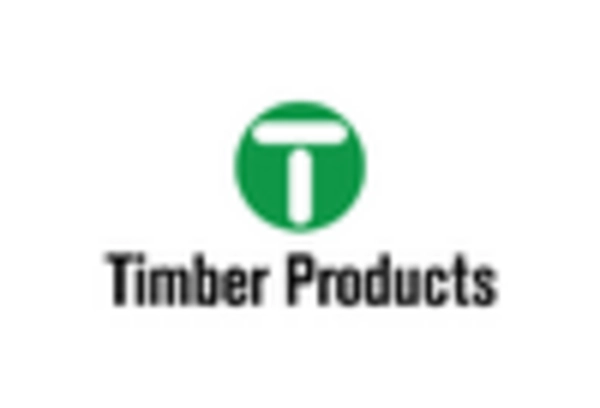Increasing Regulatory Standards
The Fire Retardant Treated Wood Market is experiencing a surge in demand due to the increasing regulatory standards aimed at enhancing fire safety in construction. Governments and regulatory bodies are implementing stricter building codes that necessitate the use of fire-resistant materials. This trend is particularly evident in commercial and residential construction projects, where compliance with fire safety regulations is paramount. As a result, manufacturers of fire retardant treated wood are witnessing a rise in orders, as builders seek to meet these evolving standards. The market is projected to grow as more jurisdictions adopt stringent regulations, thereby driving the demand for treated wood products that comply with these requirements.
Rising Awareness of Fire Hazards
The Fire Retardant Treated Wood Market is benefiting from a heightened awareness of fire hazards among consumers and builders alike. Recent studies indicate that a significant percentage of construction-related fires can be attributed to the use of untreated wood. This awareness is prompting architects and builders to prioritize fire safety in their designs, leading to an increased preference for fire retardant treated wood. The market is likely to expand as educational campaigns and safety initiatives continue to inform stakeholders about the benefits of using treated wood, which can significantly reduce the risk of fire spread and enhance overall safety in buildings.
Growth in Construction Activities
The Fire Retardant Treated Wood Market is poised for growth, driven by an upsurge in construction activities across various sectors. As urbanization accelerates, there is a corresponding increase in the demand for residential, commercial, and industrial buildings. This growth in construction is creating a favorable environment for fire retardant treated wood, which is increasingly being specified in building projects for its fire-resistant properties. According to industry reports, the construction sector is expected to witness a compound annual growth rate that will further bolster the demand for fire retardant treated wood, as builders seek to enhance safety and comply with regulations.
Sustainability Trends in Construction
The Fire Retardant Treated Wood Market is increasingly influenced by sustainability trends that prioritize eco-friendly building materials. As the construction industry shifts towards greener practices, the demand for fire retardant treated wood is expected to rise. Treated wood products that are sourced from sustainable forests and utilize environmentally friendly chemicals are becoming more popular among builders and consumers. This trend aligns with the broader movement towards sustainable construction, where the use of fire retardant treated wood not only enhances safety but also contributes to environmental stewardship. The market is likely to expand as more stakeholders recognize the dual benefits of safety and sustainability in their building projects.
Technological Innovations in Fire Retardant Treatments
The Fire Retardant Treated Wood Market is experiencing advancements in treatment technologies that enhance the effectiveness and efficiency of fire retardant applications. Innovations in chemical formulations and application methods are leading to improved performance characteristics of treated wood, making it more appealing to builders and architects. These technological advancements not only increase the fire resistance of wood but also improve its durability and environmental impact. As manufacturers adopt these new technologies, the market is likely to see a rise in the adoption of fire retardant treated wood, as stakeholders recognize the benefits of utilizing cutting-edge solutions in their projects.


















Leave a Comment